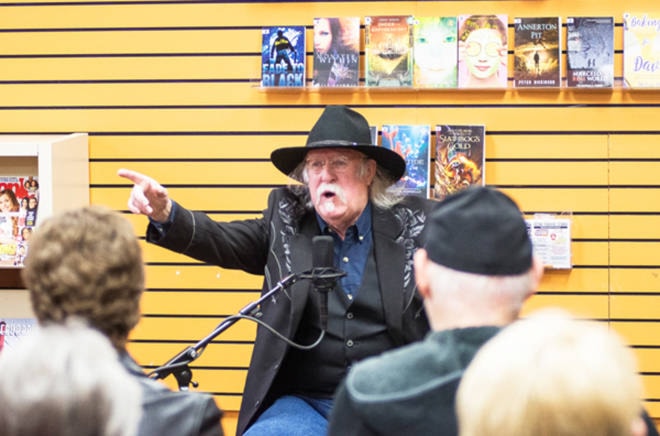By James Murray, Observer contributor
While most fly fishers are notorious gear-junkies, few if any will readily admit as to just how many rods and reels, not to mention accessories and fly boxes full of flies, they actually do own.
Acquiring gear is a part of the process of fishing and, after all, one can never have enough rods, reels or fly patterns.
Over the past 15 years or so there has been a literal explosion in the popularity of fly fishing. One of the new (even though they have been around for a long time in Britain and Europe) pieces of gear that intrigues me is the long, two-handed rods, or spey rods, which have been developed specifically for anglers in the Pacific Northwest where fishing large rivers and streams is more often the rule rather than the exception.
A number of fly rod manufacturers have also introduced a hybrid fly rod which has come to be referred to as a “switch” or “two-hand assist” rod. Switch rods are shorter, usually lighter weight spey rods that can be cast as either single-handed or a double-handed rods. The concept of the switch rod is a fly rod that includes the inherent design advantages found in a spey rod such as the ability to make longer, more effortless casts, with pronounced advantages in line control, while retaining the practicality of a standard, light-weight, single-handed fly rod. The result is a highly versatile fly rod of moderate length, usually 10 to 12 feet, that can be fished using either single- or double-handed styles.
To better understand switch rods, you first have to understand the whole two-handed spey-rod concept. Two-handed spey rods, or “long rods” as they are often referred to, were developed on Scotland’s salmon streams, most notably, the River Spey, out of necessity. Back then, anglers needed rods that were long enough to load and unload a cast, but without the need to aerialize their backcast, quite simply because they were fishing on rivers with deep, swift currents and high crowded river banks. In time, this long-rod technique became popular on the rivers and streams of the Pacific Northwest where there were similar stream conditions. Although most spey casters tend to be salmon and steelhead aficionados, many anglers, myself included, have started branching out and using two-handed rods for other fish species such as large rainbow trout.
To go along with my switch rod, I recently bought a new AirFlo Tactical Steelhead fly line. Available in line weights from 400 to 670 grains, the Tactical Steelhead line incorporates a powerful front taper to help casters like myself cut through the wind with tighter loops and make casting modest sink tips with heavy bulky flies easier. The eight-foot floating tip section, which can be easily (and quickly) removed, allows you to connect a sinking tip to the line in order to get your fly down into deep and/or fast-flowing waters. Quite simply, switch rods excel at delivering streamers with sinking tips and shooting lines over long distances.
Putting all this theory aside, the real advantage of a switch rod for me lies in the fact that a shorter angler such as myself, or any other angler wading out into fast-flowing waters, no longer has to fear wading out too far and having to fight the current rushing around your legs. With my switch rod I can stay closer to shore and still make 75- to 100-foot casts and drifts.
Another advantage, especially for someone my age, is that casting a switch rod requires a lot less effort and, on those days when I spend the whole day making continuous casts, my arms get a lot less tired.
There is also the connection with the past and the whole tradition of fly fishing which, according to most historians, also likely started on the River Spey. Spey and switch rods have become common on western Canadian rivers like the Gold, Cowichan and Stamp on Vancouver Island, as well as the Dean, Kitimat, Skeena, Skagit, Stikine and Bulkley rivers, not to mention the Adams right here in the Shuswap. So many rivers, so little time.
I ‘m looking forward to this coming season. I’m going to cover as much water as I can with my switch rod in hand, the sun on my face and the cool morning mountain air filling my lungs. Who knows, I may even catch a steelhead.
